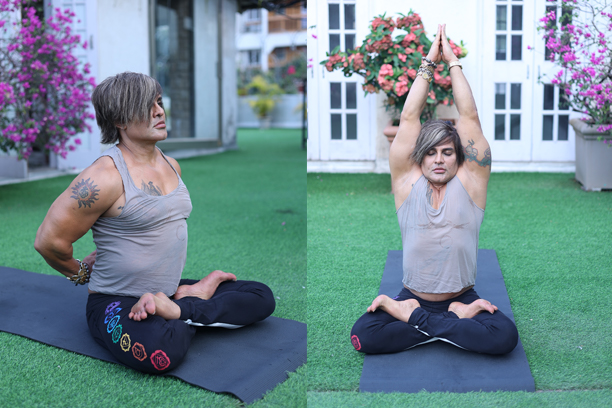The objective of traditional yoga is union with the absolute or the divine, whereas modern yoga is mainly concerned with physical fitness. The different movements that are associated with Hatha yoga were practised to get the body ready for extended durations of meditation. The emphasis of yoga, as it is generally practised in the West, is mainly on the qualities of physical fitness. Of course, if you choose to utilise it that way, it can be a spiritual encounter, says Yash Birla.
Yash Birla is a firm practitioner of yoga.
He advises people to include yoga in their daily schedule, as it benefits the mind and body.
There are numerous modern forms of yoga, the majority of which are Hatha yoga variations. All yoga practises aim to achieve a balance of the body, mind, and spirit; however, each style may vary in the execution of the Asanas (movements) and other aspects, such as the emphasis placed on postures, alignment, the flow of movement or breathing. Some may employ props or change the temperature, while others might be tailored to fit specific populations, including older or pregnant women.
In contemporary yoga, narrative yoga is interpreted in various ways, ranging from athletics to meditation on the one end to being a healing method or a spiritual path on the other. Knowing which is which and which can be challenging. Let us learn the 7 differences between Traditional Yoga and Modern Yoga.
- Modern yoga regards yoga as a physical posture practise (Asana), as opposed to traditional yoga, which sees yoga as a discipline of spiritual self-realization (Moksha).
- The physical part of Asana is where Modern Yoga practise starts. The body and Asanas might not come first in traditional yoga.
- Asanas are performed in many ways, which are referred to as “Yoga styles” in modern yoga. Traditional yoga is divided into various Yoga types, which represent various approaches to achieving spiritual self-realization.
- According to modern yoga, one should do yoga for around an hour, a few times each week, as a form of exercise or relaxation. Traditional yoga is more of a daily lifestyle programme that involves rituals and practises to develop the mind and heart.
- The Vedas and Tantras are the spiritual doctrines from which traditional yoga derives. Various philosophical systems from around the world serve as inspiration for modern yoga.
- Traditional yoga aims to progressively shift the focus away from the exterior, sensory, fleeting reality and toward the internal, spiritual, eternal truth. In general, modern yoga does not place much emphasis on any one particular idea.
- Traditional yoga places a strong emphasis on developing moral and ethical purity, razor-sharp concentration, unwavering devotion to its practice, and deep faith. The practice of modern yoga does not require these qualities.
Yash Birla hopes that these differences help you to learn and choose what is best for you and your body.








[…] reading is not the only use of this traditional style of yoga. The techniques of Karma Yoga are beneficial. The following is a summary of the main benefits of […]